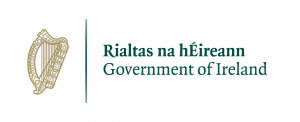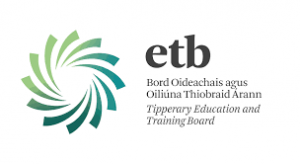Changes to public health guidelines announced from 5th May
The framework sets out how we can keep the level of transmission as low as possible while balancing continuing restrictions proportionately with the positive social and economic benefits which will be brought about by lifting restrictions.
In the meantime, we are extending the distance you can leave your home, so from next Tuesday it will be possible to go up to 5km for the purposes of exercise. People who are cocooning need to continue to do so, however it will be possible from Tuesday to go outside for exercise and fresh air, as with others in society, provided you keep within 5 km of your home and observe social distancing at all times.

There are 5 phases in the Roadmap to ease restrictions. Each phase consists of a menu of options will be considered by Government as it gradually opens up economic and social activities.
Examples of the types of actions which will be considered under the various phases include:
Phase 1 (18th May)
- allow outdoor meetings between people from different households
- open up childcare for healthcare workers
- phased return of outdoor workers
- open retailers which are primarily outdoor or those which were open during first level of restriction (e.g. opticians)
- opening of certain outdoor public amenities
Phase 2
- allow visits to households
- develop plans and supports to open up business with consideration for safety of staff and customers
- open small retail outlets and marts where social distancing can be observed
- open public libraries
Phase 3
- allow small social gatherings
- opening of crèches, childminders and pre-schools for children of essential workers in phased manner
- return to work for those with low levels of interaction
- open non-essential retail outlets with street level entrance and exit
- open playgrounds
Phase 4
- opening of crèches, childminders and pre-schools for children of all other workers on a gradually increasing basis
- return to work for those who cannot work from home
- gradual easing of restrictions for higher risk services (e.g. Hairdressers)
- opening of museums, galleries, places of worship
Phase 5
- allow larger social gatherings
- return to work across all sectors
- on a phased basis, commencing at the beginning of the academic year 2020/2021, opening of primary and secondary schools and 3rd level institutions
- further easing of restrictions on high risk retail services
The Roadmap also sets out a framework for future decision making, which will at all times be underpinned by public health advice.
The government will regularly assess the following criteria as we seek to keep the level of transmission low while gradually restarting our economy:
- the latest data regarding the progression of the disease
- the capacity of the health service
- the capacity of the testing and tracing system
- the measures in place to protect vulnerable groups
- an assessment of the impact of excess morbidity and mortality as a consequence of the restrictions
The COVID-19 emergency has had an unprecedented impact on our economy, as well as our society. As we begin the phased reopening of our economy, businesses will require additional supports.
Many businesses will not simply be able to pick up where they left off. The government will meet again tomorrow (Saturday 2 May) to agree a further package of measures to help our businesses to restart, reconnect and rehire staff who have been laid off or furloughed.
Separately, a National Protocol to protect the health and safety of workers is being developed by Government, employers and trade unions, with the assistance of the Health and Safety Authority and the HSE.
The risk of a second wave of the virus is ever present. As a country, we can only move from one phase to the next if the virus stays under control between each phase. There will be a long-term need for physical distancing, for good hand hygiene, for respiratory hygiene, regular cleaning and for people to stay at home and isolate if they are sick.
However, the government is very conscious that that there are significant consequences of social distancing measures. The normal structures of daily life – work, school, sport, entertainment – have temporarily ceased to exist and even as we re-open society, we will be living our daily lives in modified ways for as long as we live with this pandemic.
We recognise that as we seek to mitigate the risks of transmission of COVID-19 through social distancing restrictions, we are creating other challenges for individuals, families and communities. Some of these challenges are manageable in the very short term but as restrictions continue, the impact becomes greater for some groups.
In living with restrictions, the government will take account of these balancing impacts and the particular consequences for more vulnerable groups in our society.
The areas where social-distancing causes most concern include:
- non-COVID-19-related health delays
- wellbeing and mental health
- vulnerable groups for whom home is not a safe place
- minorities and other groups disproportionately impacted by the restrictions
- risk-taking behaviour and offending
- crime and policing and access to justice
Government departments and agencies have been working to modify work practices, modes of delivery to meet with these challenges and this work will have to continue. It is acknowledged that additional measures have to be taken to reach out to more vulnerable groups and those that are particular affected by the guidance on cocooning and social distancing.
Some of these measures are already underway, through various cross-government efforts such as the Community Call, In This Together and Still Here initiatives and campaigns.
Source: https://www.gov.ie/en/press-release/e5e599-government-publishes-roadmap-to-ease-covid-19-restrictions-and-reope/
Source Image: https://corksafetyalerts.com/news/government-publishes-roadmap-to-ease-covid-19-restrictions-and-reopen-irelands-economy-and-society/

























